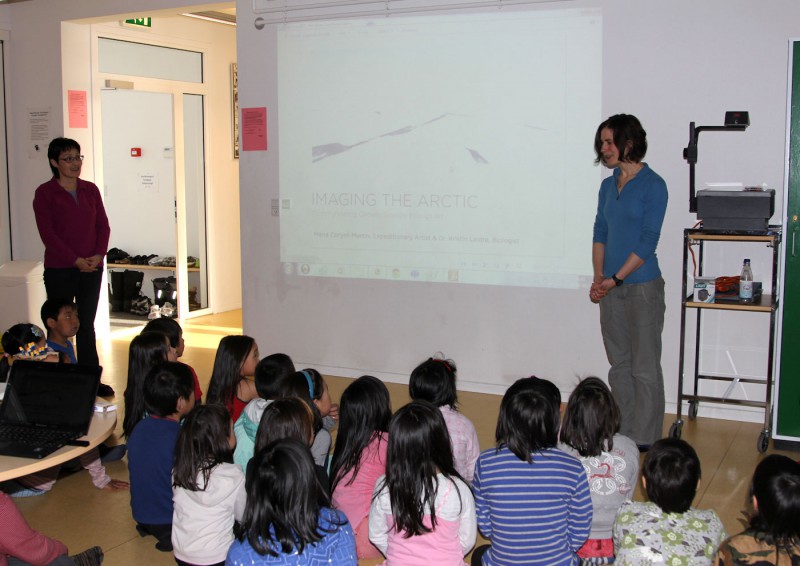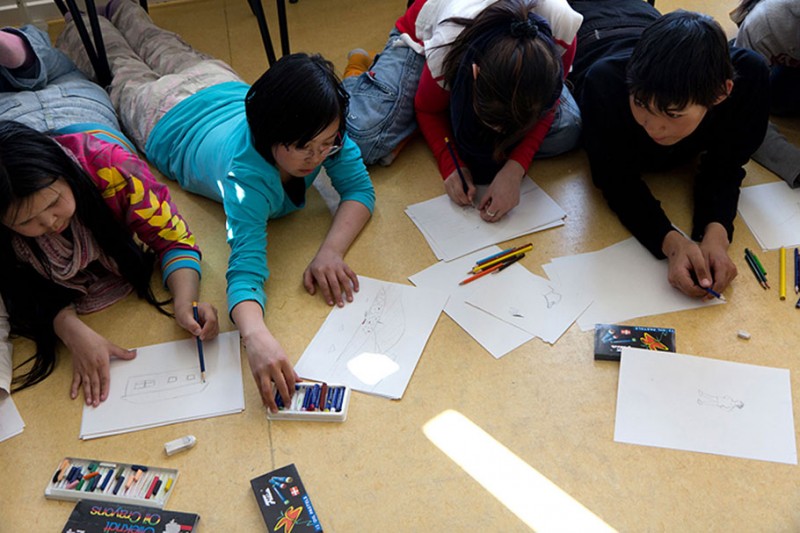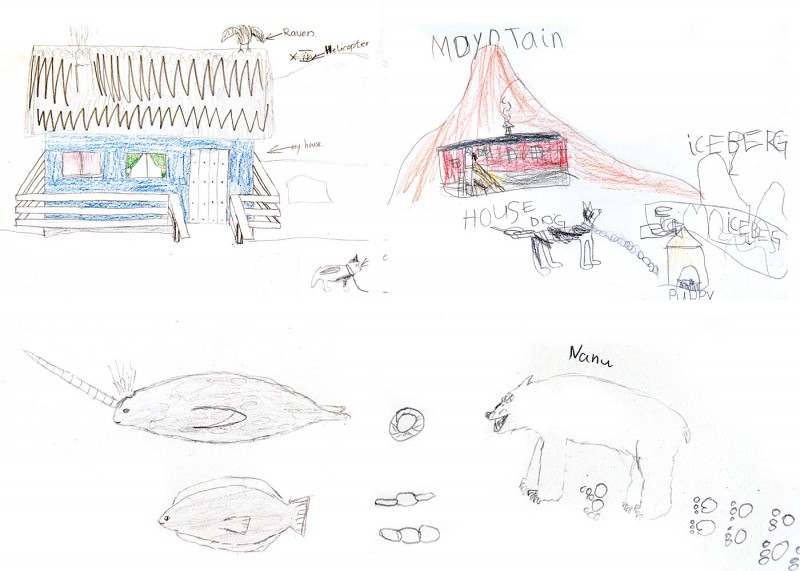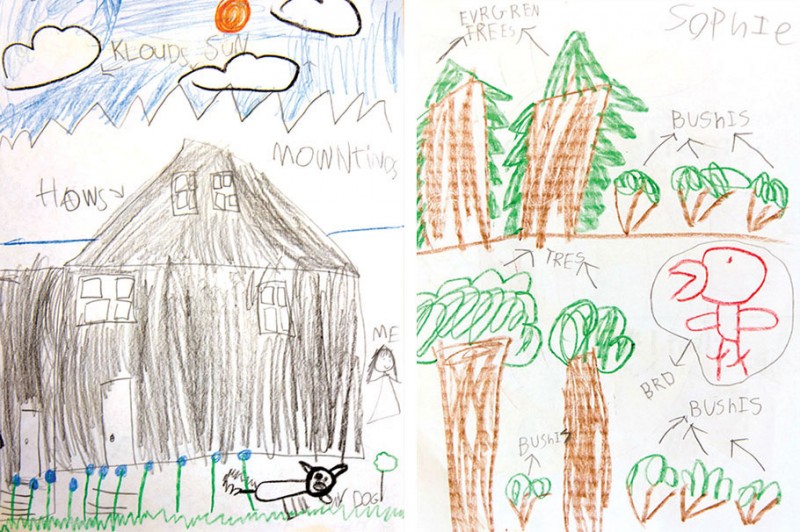Field Notes #4: Outreach
This is part of a series of field notes from Greenland. Read Field Notes #1: Niaqornat or view all related Imaging the Arctic posts.

The Greenlandic settlement of Kullorsuaq (74°34′45″N 57°13′05″W) is home to around 430 people, nearly a quarter of who are students. My first priority after we landed was to connect with the school to offer a series of workshops. We arranged three visits with about one hundred 1st through 10th grade students.

With the help of a translator, I gave a presentation on expeditionary art and introduced our project, Imaging the Arctic. Next I invited the students to draw with me, considering elements of their home environment and what they might want to share with others around the world.

The students sketched and even practiced their English with inspiring energy and focus. They drew their iconic mountain, animals, and elements of daily life, from colorful houses to helicopters flying overhead, icebergs, sled dogs, polar bears, and hunting and fishing.

This Spring after I returned to Seattle, I began meeting with school groups, including a wonderful class of kindergartners from the Meridian School. I led the students on a virtual expedition to Greenland through a multimedia presentation to learn about the Arctic and impact of climate change. We took time to sketch and learn about elements of the Arctic, such as icebergs, narwhals, polar bears, and the people who live there. After sharing the Greenlandic students’ art, I asked the class to reflect on their own home and landscape. Notice the difference in colors!

Art can bridge language and cultural barriers, and it cultivates observation, exploration, and curiosity which often leads to scientific inquiry. I hope this activity helps create a cross-cultural connection as well as build global environmental awareness for the students. While climate change is occurring around the world, the impact is more apparent in regions such as the Arctic. Reflecting on our idea of “home” we may come to realize it expands beyond the boundaries of our neighborhood, town, or country, to include communities and environments around the world.

View all related Imaging the Arctic posts.
3 Responses to “Field Notes #4: Outreach”
Robin Hanley
Hi Maria, your recent notes and blog posts are wonderful. I love your explaination of how you paint in the arctic. My son, who met you earlier this year, a big a gentle giant of a kid, just left for Svalbard to study arctic biology at the university there. He took along some art supplies to sketch with, as he is a painter as well. Thank you. Robin
Maria
Thank you for the note, Robin! I hope your son has a marvelous time in the Arctic, I’d love to see his paintings when he returns!
Julie Coryell
Wow, Maria, the colors on the houses are super. I like the tight interplay of block color with neat line and “found” white highlights–unusual and vivid effects! I also admire the wisps of aqua along the sea bergs/